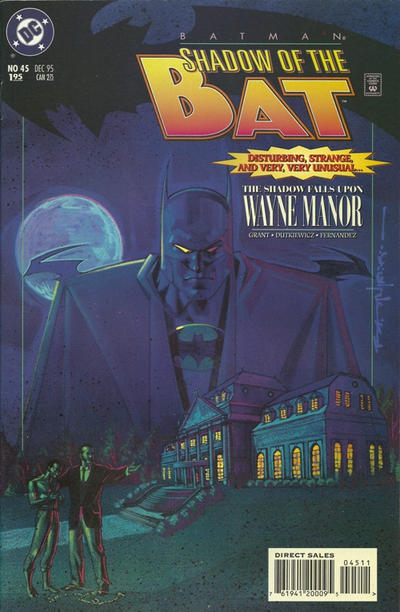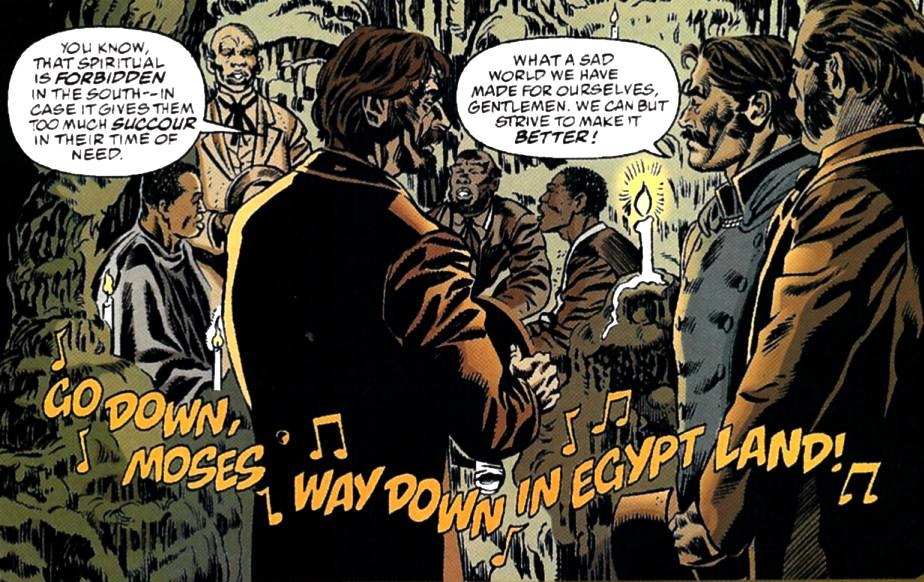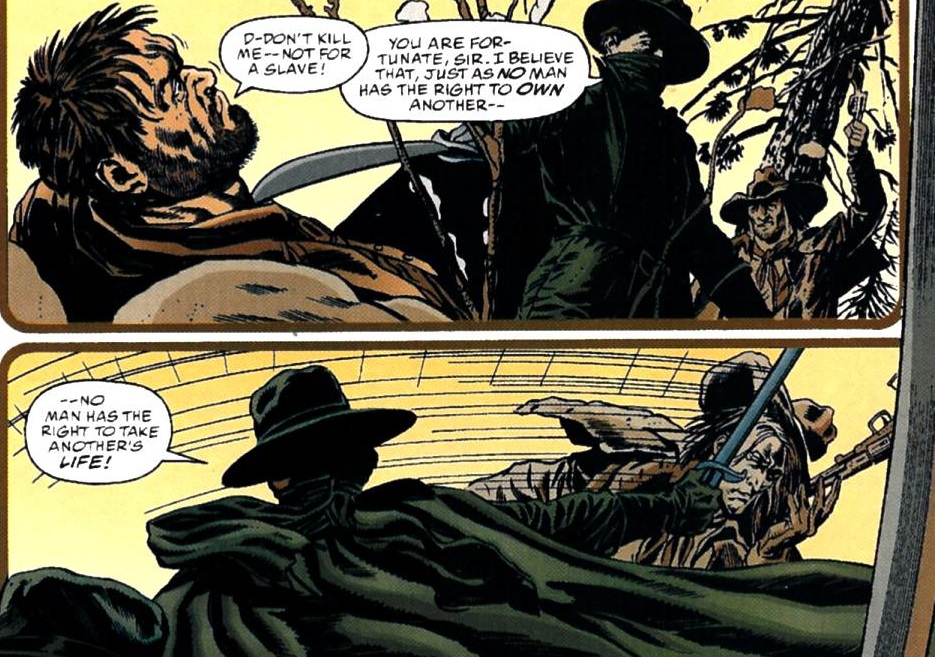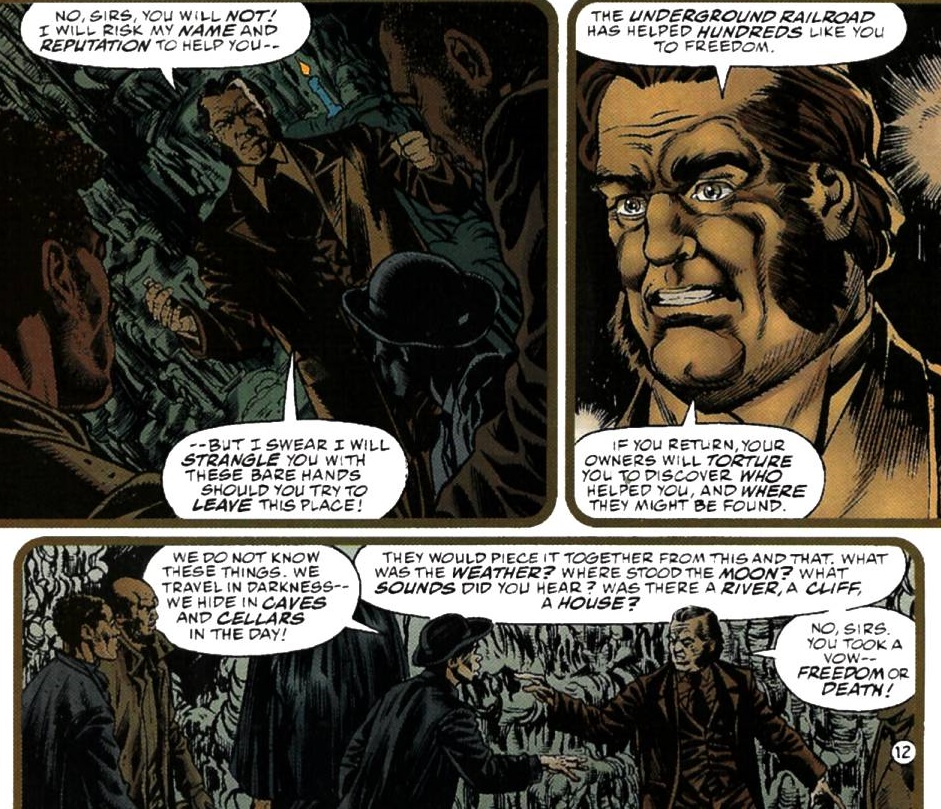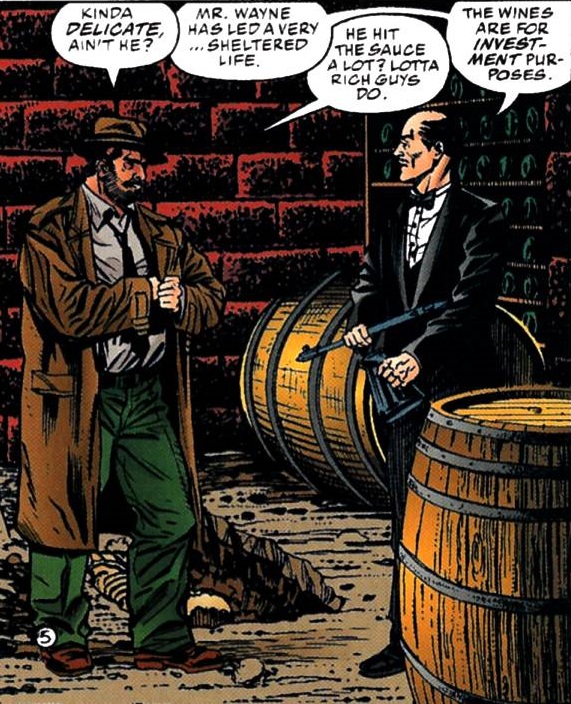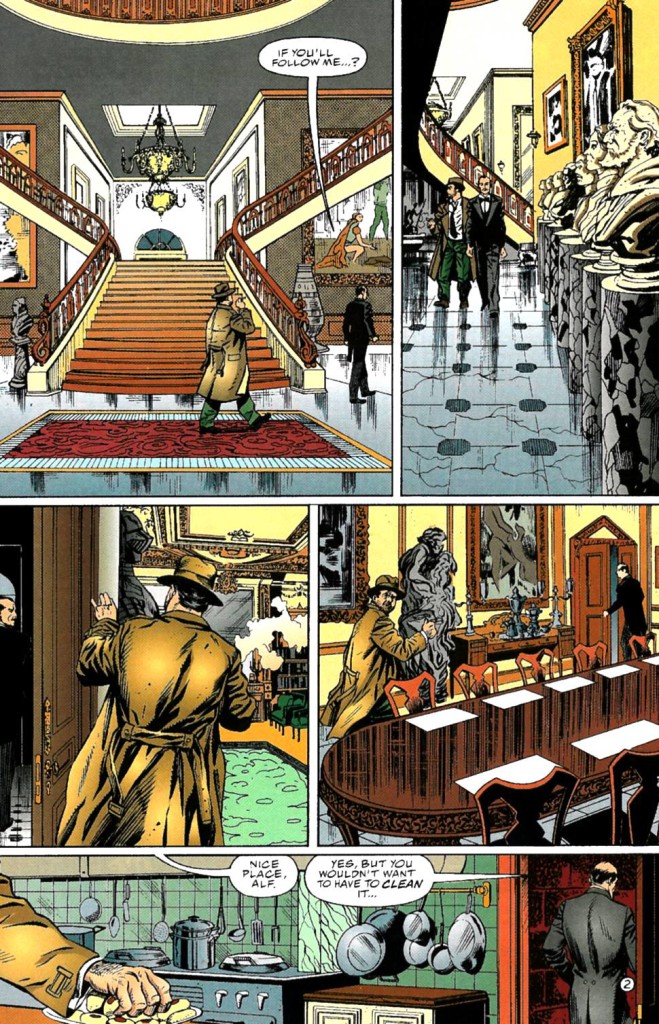Last week I went on and on about the compelling and cathartic lack of subtlety in the Batman comics of Alan Grant, so I figured it would be fair to spotlight one of the few issues that fall outside that description. I’m talking about the remarkably nuanced Shadow of the Bat #45, cover-dated December 1995 and titled ‘Wayne Manor: Anatomy of a Murder’ (not to be mistaken for Shadow of the Bat #71, which is confusingly also called ‘Anatomy of a Murder’ and it is a pretty neat comic in its own right).
This is an unusual issue on various levels. Apart from Brian Stelfreeze’s painted cover image (a homage to Detective Comics #31), the Dark Knight is nowhere to be seen and Alan Grant’s script avoids many conventions of the pulpy adventure and crime genre that typically fuels Batman stories. You won’t find any ingenious deathtraps or outlandish supervillains like Cornelius Stirk – the hypnotizing, heart-eating serial killer – in this one. Instead, for the most part we get a western-tinged period piece set during the US Civil War.
Even Michal Dutkiewicz’s interior pencils stand quite apart from the flashy art of Alan Grant’s usual collaborators in the series (like Norm Breyfogle and Mark Buckingham). Inker Gerry Fernandez and colorist Pamela Rambo – with color separations by Android Images – give Dutkiewicz’s work a subdued, quasi-realistic tone that, in most other comics, would’ve probably clashed with Grant’s style.
The plot: after Bruce discovers the corpse of his great, great, great-uncle Joshua Thomas Wayne underneath his wine cellar, he spends most of the issue reading the diary of the corpse’s brother, judge Solomon Zebadiah Wayne. We are thus treated to an extended flashback that shows how one of Batman’s ancestors died while operating the ‘underground railway’ that smuggled slaves from the South up the East Coast to Canada.
On the one hand, Shadow of the Bat #45 can be read as a relatively simple tale that effectively denounces slavery, casting those who exploit it as villains and those who fought it as part of a lineage of outstanding heroes that goes all the way up to the Caped Crusader himself. An epilogue wraps up the issue with a touching character moment, as Bruce Wayne, visiting a cemetery, reflects about his family history and, reminded that he is the last of his line, melancholically hopes to amend this condition in some future day or night.
All in all, this could almost be an Elseworlds comic, with one of the characters briefly resembling a 19th century proto-Batman:
On the other hand, Alan Grant buries underneath this framework a few elements that complicate such a straightforward reading. In fact, ‘Wayne Manor: Anatomy of a Murder’ can also be seen as an engaging illustration of the contradictions of wealthy white liberalism.
Like in your average Batman yarn, the protagonists of the story are rich protectors lending out a helping hand to poor victims (in this case the slaves), whose role is to make the heroes look good. However, recasting this narrative in another time, with new characters, allows Grant to highlight the substantial difference (and hierarchy) between the two positions. The comic doesn’t shy away from placing the Waynes in a tradition of well-meaning yet privileged humanists, whose behavior – for all its heartfelt altruism and progressive attitude – cannot be disconnected from their elite background.
Not only do the Wayne brothers condescendingly lecture the escaped slaves who think about giving up and going back to Maryland rather than facing a cold journey into the unknown, they outright threaten the fugitives with deadly force:
This subtext is there since the very first pages, still set in the present day, as the shabby Sergeant Harvey Bullock arrives at the luxurious Wayne Manor to investigate the murdered corpse. During a wonderful sequence in the cellar, everyone stays true to character: Bruce Wayne sticks to his spoiled socialite act, Alfred Pennyworth behaves like the smartest man in the room, and Harvey Bullock barely disguises his contempt for the upper class…
As Batman fans, we know that Bruce’s foppish persona is actually a disguise, but Shadow of the Bat #45 cleverly reminds us that such disguise is nevertheless built on a long legacy of hereditary power by having Bullock follow the house butler at length across an aristocratic mansion decorated with family portraits and busts…
That bottom panel drives the point home, with Bullock’s grubby hand stealing food from the plentiful kitchen while Alfred hints at his condition as a servant who works hard in order to preserve his master’s lifestyle.
All this recontextualizes the closing scene, in which Bruce Wayne, standing on the buried bones of his ancestors and contemplating his parents’ adorned grave, has a realization that he is the final master of Wayne Manor (‘He is the end of a Gotham dynasty, a living, breathing family tree toppling in the dust of time.’). While Bruce doesn’t rule out the possibility that he too will eventually spawn a continuation to the family name – and, ultimately, its possessions and status – his inner thoughts suggest a dark undertone in such a yearning, with Alan Grant’s narration claiming that this will happen only ‘when the innocent no longer cry out for justice… or he is no longer able to hear them.’
That said, we all know that moment is still far away, if nothing else because further down the page an orange blurb promises that in the following issue ‘Cornelius Stirk gets to the heart of the matter in… FEAR FRENZY!’

